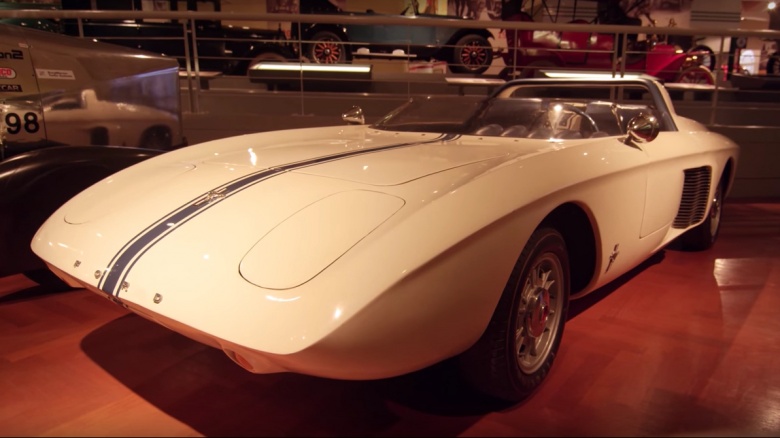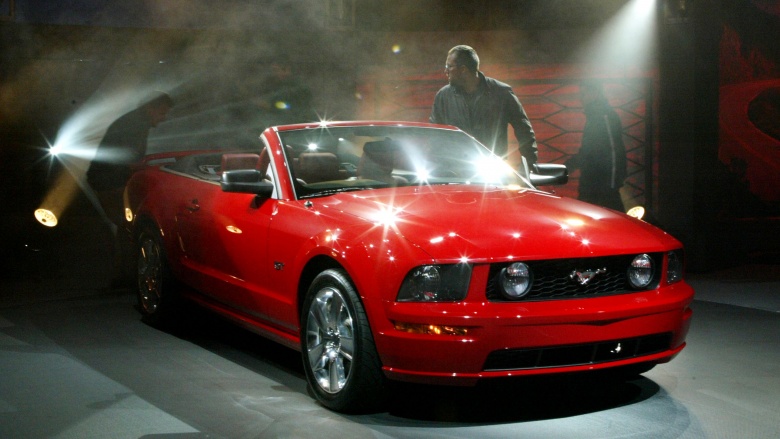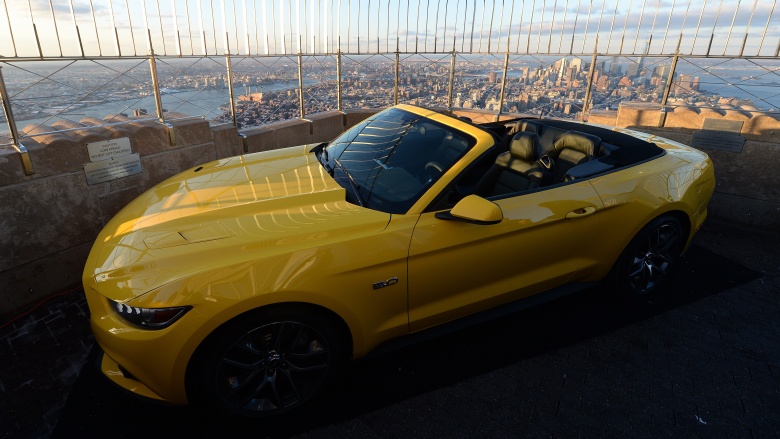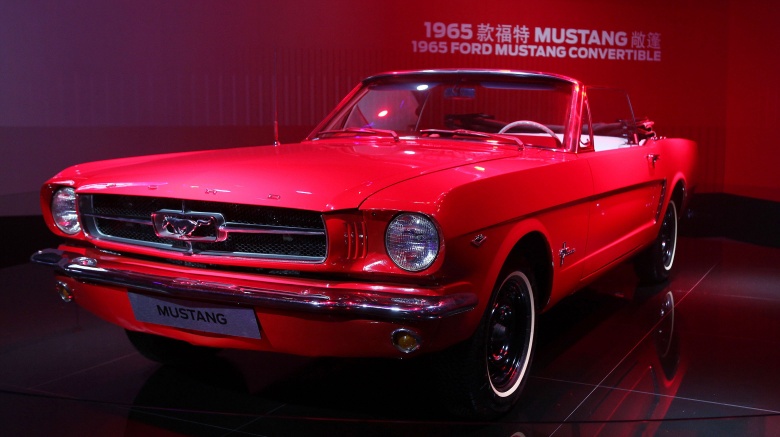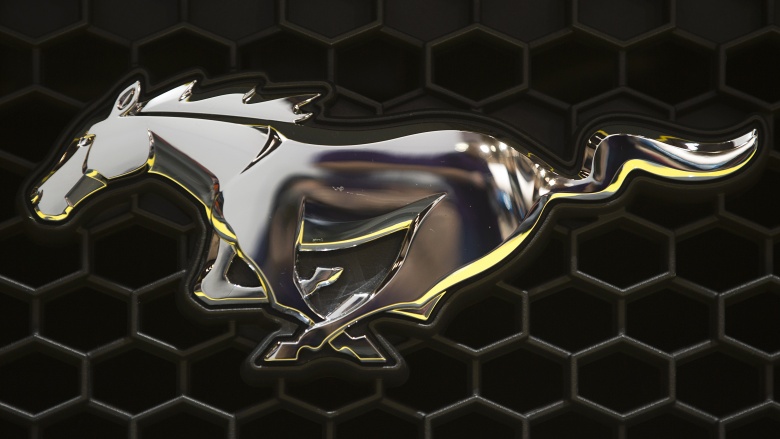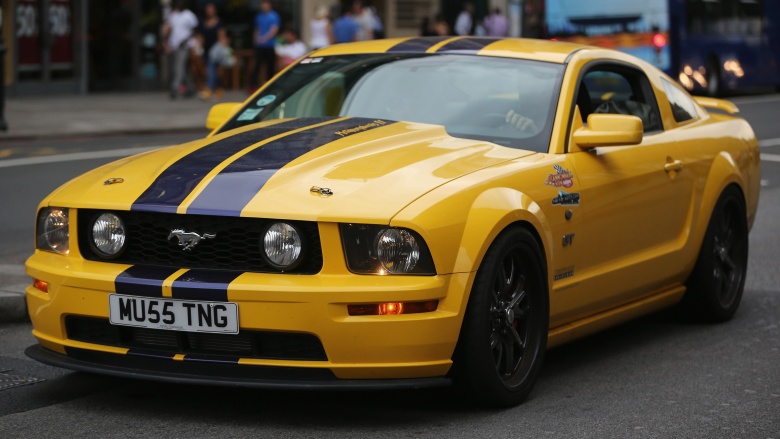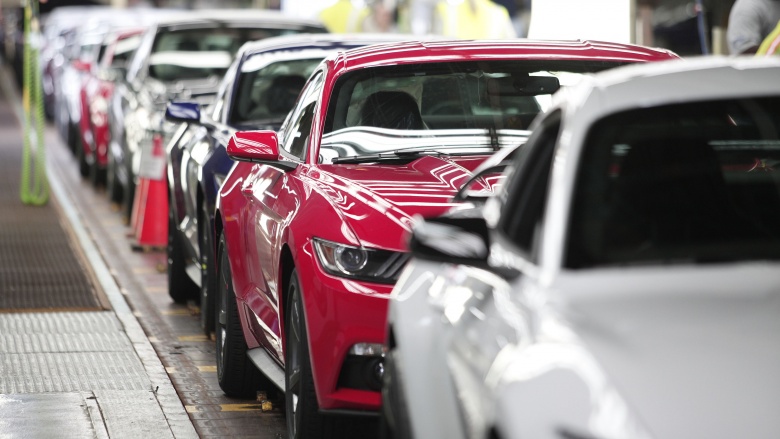Facts You Didn't Know About The Ford Mustang
The Ford Mustang rolled off the production line and into our lives in 1964, and it's not too much of a stretch to suggest that it changed the world...well the automotive one, at least. Until that time, it was impossible to get performance, economy, and cheap, all in one package, but the Mustang changed all that. Soon Ford's new pony was storming into the history books and bringing performance and style within reach of a whole new generation. In 2014, the Ford Mustang turned 50 years old, and like most people hitting middle age, it didn't get there without picking up a few stories. Here are a few things you might not know about the Ford Mustang.
The wrong formula
As you might expect, the car that hit the showrooms in 1964 wasn't the first drawing on the board. And while most of those drawings probably ended up lining hamster cages, one design found its way into a working prototype. The 1962 Mustang prototype was definitely an unconventional design, and probably reflects the enthusiasm of the engineers more than any real attempt to satisfy public demand. But nevertheless, the prototype was taken to Watkins Glen, a Grand Prix circuit in upstate New York, where it was put through its paces. Driven by American Formula One racer Dan Gurney, the 1962 prototype lapped the track almost as fast as the F1 cars. Maybe it's a good thing that model didn't make it into production...
This ain't no pony
With the previously unheard of combination of cheap, fast, and stylish, the Ford Mustang broke new automotive ground. And since it didn't fit into any of the old categories, it created a new one, the "pony car." As a result, while the name is obviously a reference to the Mustang's running horse logo, every time a competitor produced a challenger to the Mustang's market domination, their vehicle also became a pony car. The Ford sales strategy: if you're struggling to increase your market share, create a new market and set the terms. The category fully came into its own with the subsequent release of Chevrolet's Mustang competitor, the Camaro.
Nice views come as standard
In 1965, Ford embarked on a pretty ridiculous publicity stunt, and they set their sights high—literally. On October 20 of that year, Ford unveiled a convertible Mustang parked on the observation deck of the Empire State Building in New York, and then proceeded to photograph it from a helicopter. And while the elevators in the Empire State Building are pretty fast, they're not actually that big. So the Mustang was specially converted to be disassembled into four conveniently elevator-sized pieces. For the car's 50th anniversary in 2014, the stunt was repeated, but this time with a 2015 Mustang GT. And while the car may have changed since 1965, the elevators in the Empire State Building haven't. So once again, like a fashion-crazed celeb, a Mustang went under the knife to better fit into something several sizes too small. They should have just used Photoshop.
Take a number
Thanks to an aggressive marketing campaign, which included ads on all the major television networks, the first day of sales went "rather well" for the Mustang. It went so well, in fact, that on the first day of sales, dealerships across the country sold out and had to start waiting lists. But while the advertising executives no doubt took all the credit, a first-day sales total of 22,000 units looks more like a force of nature. The untapped public demand for this new class of vehicle was obviously so great that Ford really only needed to get the word out and the sales would just happen. The ad execs might as well have taken credit for the sun coming up.
Destination left
The original mustang—we're talking about the feral horse that gave its name to the car—is an indelible image of the American West. But if rumors are to be believed, that's not the only subliminal symbol on the car. Along with the associations with power and speed evoked by the design, the arrangement of the horse "moving" from right to left is meant to tap into those pillars of American identity: westward expansion, American freedom, and manifest destiny...or maybe it's just a really cool logo.
Fake it til you make it
In light of its later success, it might come as a surprise to hear that Henry Ford II, then-president of Ford Motor Company, rejected several early proposals for the Mustang. But supporters of the idea wouldn't take no for an answer. In fact, according to Mustang 360, they even went so far as to invent market research data to justify the cost of development. With the benefit of hindsight, they could probably have done actual market research and had legitimate evidence. But then sensible planning clearly wasn't in the spirit of the wild horse even then—and it makes for a much better story.
A fast breeder
Production of the Ford Mustang began in March 1964, and once sales started, Ford soon realized they were onto a winner. By the end of 1964, a mere eight months after sales began, the Mustang had sold over 260,000 units. This figure was then eclipsed by 1965 sales which totaled over 550,000 units, and in 1966 Ford manufactured the 1,000,000th Mustang...less than two years after production started. And although sales figures rose and fell through the years, in 2008 Ford built their nine-millionth Mustang. That's a lot of ponies...and all the horses you'll ever need.

